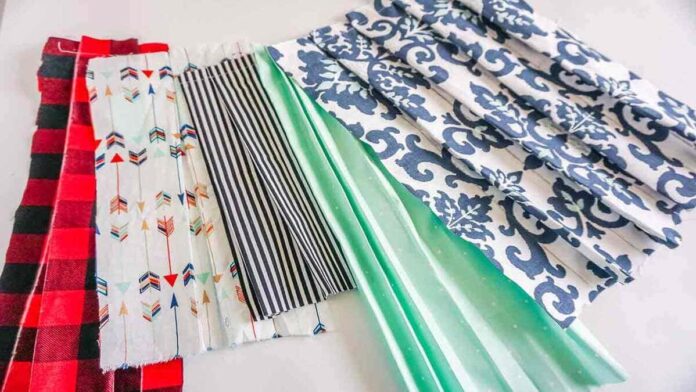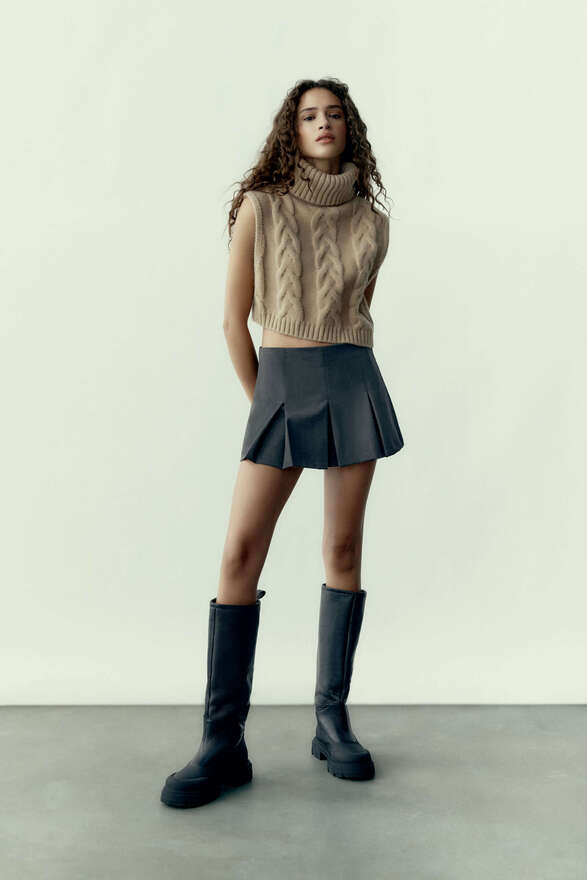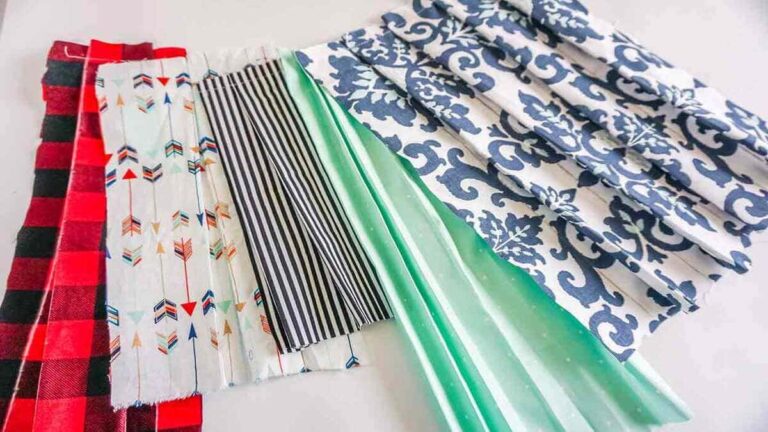
Something that appears as a feature more than often displayed in style shows, pleats are rather wonderful means of functionality that permeate through the fabrics in which they are used. Be it the specific creases of fashion or the larger expanses of lifestyle, the layers of fabric in which the creases express themselves are rather diverse and in such iterations which are also dutifully derived. Style is as common an attribute that seems to capture the “spirit” of pleating as the utilitarianism of its nature.
Formed by doubling sections of fabric as they fall back on themselves, pleats become the essence of being embedded into the material by some sort of attachment. Even when they are usually designed to retain their shape and location by pressing, ironing, or creasing, techniques still exist to ensure that the pleats can be maintained even in a flowing character. Maintaining their appeal and maintaining the advantage of serving such purposes are folds that are worked out as different styles of expression of the types and varieties of their making. Here exploring some of those pleated presentations that live up to their expectations of maintaining a functional style –
accordion pleats
These pleats look exactly what they sound like, in effect mimicking the look of an accordion. Probably the narrowest types of pleats generally shaping lighter garments, characterized by the flowing nature of prominent femininity, the accordion statement is almost exclusively an expression of elegance encountered along the body of skirts, usually longer. The pleats themselves are tightly and evenly folded in alternating raised and recessed shapes and are usually heat set in crisp pleats so that the silhouette of the skirt displays the drama of a sashaying attribute.
Everything in an accordion pleat is precise or symmetrical, that is to say that each of the pleats asserts itself in exactly equal lengths of their extension over the entirety of the garment. The tight pleating is what allows the garment to expand with movement, giving the wearer such an aesthetic effect that is as appealing in its slimming character as it is in its fullness.
The considerably greater number of pleats resulting from its narrower, tighter style is what also dresses accordion-pleated skirts in a zigzag flare towards their bottom. At this aspect of its identity would also rise those folds which are also, though less commonly referred to as sunburst folds or fan folds. Accordion pleated collars and slightly more subtle accordion dress sleeves could also present fun avenues to incorporate this style into your fashion statement.
knife folds
Knife folds are most often identified with concertina folds, the latter being indeed an interpretation of the former. The differences are more than evident in their faces though, at least in the size of the creases if not for anything else. Knife pleats however all face the same direction opposite to accordion pleats which are actually directed in opposite sides of each other.
Knife pleats are one of the most common styles and types of pleats, even when the technique of pleating them is not so simple. Asymmetrical in themselves, in that one side of them is always longer than the other, so box pleats take on a flat look of what also identifies as box pleats. Occurring in a smooth line and therefore extremely sharp, knife folds are so called because of their sharpness in manifestation, much like the edges of a knife itself.
box pleats


It looks like all sorts and types of folds are somehow related to each other. So, while accordion pleats tend to be closer to box pleats, box pleats tend to be closer to box pleats. All of them tend to be very identical in their allusion, which essentially makes them respond to the calls of whatever they are indeed imitating. No wonder box pleats are so called because they produce an image of boxes sitting on the garment where they are made to rest.
Box pleats are basically box pleats made back to back. Two knife pleats opposite each other create a raised section to work in the boxed reference in the world of pleats, which interestingly can also be worked to ‘enclose’ the volume instead of create another type of fold very obviously invoked as an inverted box reference.
Full length and rectangular in statement, the box pleats are prominent enough to be used as a single stand-alone item while still working well as part of a series. Versatile also in their range and area of attendance, which encompasses everything from shirts and skirts to curtains and the like, box pleats extend the scope of their identification even further by appearing in stacked or double versions of their being. Box pleats also resonate in greater functionality as they are not very stylistic ways of wearing even though they can indeed be worked with such a fashion intention.
Roll Pleats
Quite a diversion from the blatant assertion of many flat pleats as to whether knife or box type are the rolled pleats that are “softer” in their making. Devoid of the sharpness and clean curation of the flat technique of pleating, tulle pleats then emerge as a defined style that encompasses a range of styles as such.
To be precise, pint pleats come as unpressed pleats and are therefore the exact opposite of pressed flat pleats. They also require a larger amount of fabric to create the rounded design and are therefore always bulky versions of this position. Roll pleats are indeed made by rolling a piece of fabric into a tube, impressing an unmistakable statement of a “hollow” that runs the full length of the fabric. These would again be feminine styles of skirts and dresses over which roll pleats are used with the presentation billowing, even bouncy, evoking fullness visions.
Honeycomb pleat
The envisioning real-world honeycombs could be flat or at best slightly curved identities in revealing. But in their incorporation into the dynamics of fashion, they assume a more rounded affirmation of pleats. Essentially overflowing with style ruffles and therefore exclusively stylistic, it is nice to see that honeycomb pleats serve as the basis for the smocked dress identity to express itself.
As narrower tubes are pleated in and over the fabric, the vision strikes in a honeycomb pattern that indeed oozes style and drama. The folds are gathered into small rolls of fabric that emerge in a decorative spectacle over the span of its premises. Needless to say, honeycomb pleats give garments a dressier style by instilling the sensational feeling of what fashion has to offer in all of its custom creations.
Kicking
Defined in their inverted identity but more dynamic in working mode, kick pleats can be interpreted in terms of box or knife pleating styles. They are generally permitted in tighter garments to facilitate freedom of movement, especially in fitted skirts but also in coats running down the back. They are generally shorter than other types of pleats and primarily functional, starting from the bottom of the hem to ensure that the garment sits sufficiently well on the body, even when it widens at the edges to allow mobility.
Fluted Pleats
How far can a fold be assumed that even calls for a specific device to deploy the characteristic charm of its being? Consider the fluted style in the pleating and you may discover the distinction that this taste of the garment calls for – albeit to some ambiguity indeed. Because while fluted pleats are usually worked out with what is called a fluter in action, these tiny pretty ones can also be derived in pretty much “ordinary” works.
However they come to life, fluted pleats always retain their special charm. In fact, in their very identity which emerges as grooves, these very small folds of rounded or pressed character are very remarkable. The purpose of their use is also a little more certain since they usually come in the form of trimmings on clothing. Not to mention the process which is equally methodical and the fluted pleats are quite remarkable definition in their appearance.
Cartridge pleats
The cartouche folds may seem like a fairly modern identity in its name, but they actually have a significance that occurs as more historical in its particular prevalence during the 15th and 16th centuries. So essentially sewn into fashion requirements at the time that it also gained special reference as a gauge. The premise of their origin being that they served to help incorporate a large amount of fabric into smaller waistbands – something that prevailed as a custom in women’s clothing of those “tightened” centuries.
Gauge or cartouche pleats are also an allusion to fashion’s fuller fantasies, which relied on the narrowest possible sizes that appealed with their delicate dimensions. Taking advantage of a certain irony, cartridge-style stitching in pleats must occur in careful considerations of creating small pleats that do the job of holding all that fabric together without spitting out an unsightly sight of uneven puckering.




Add comment